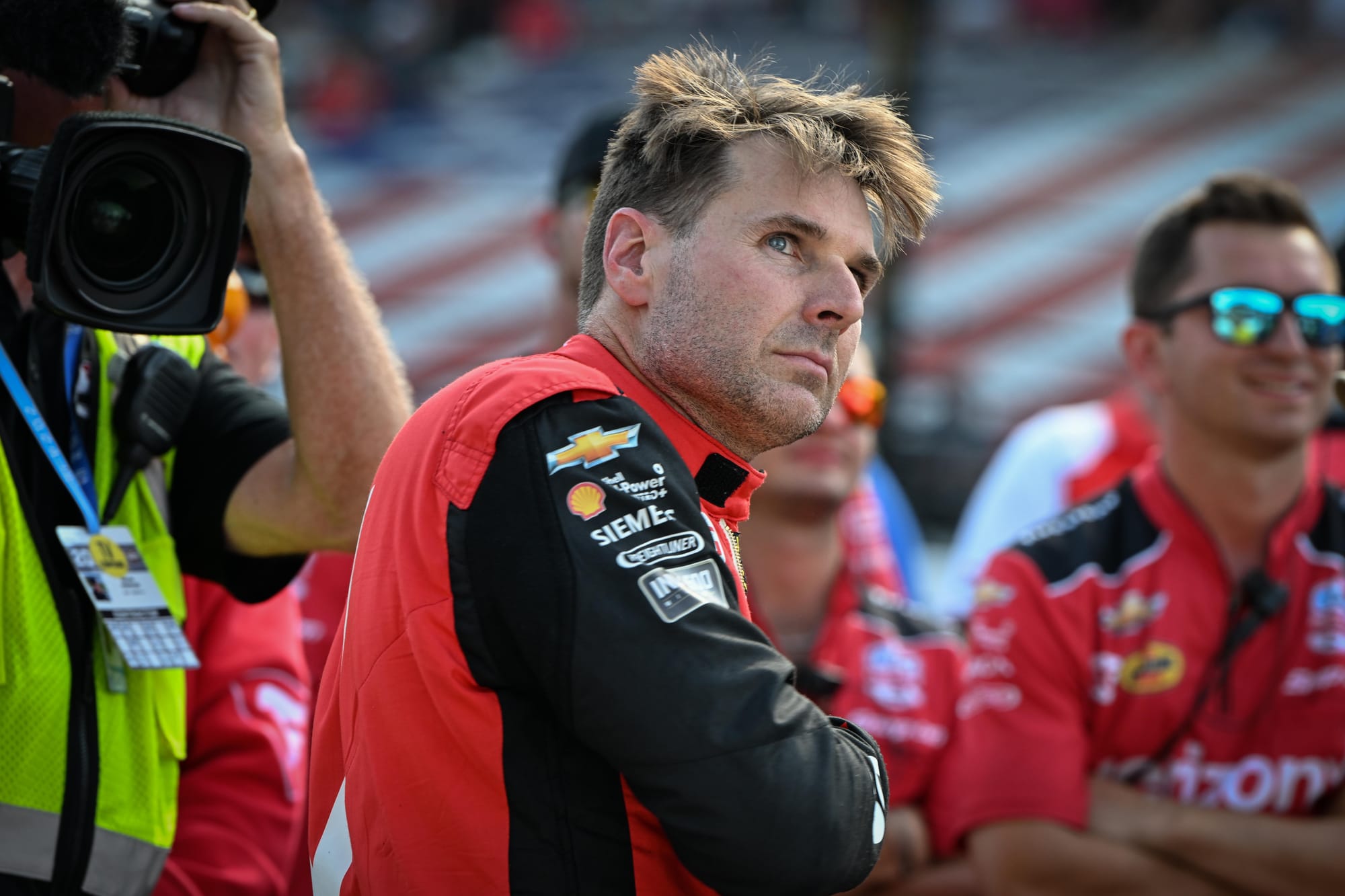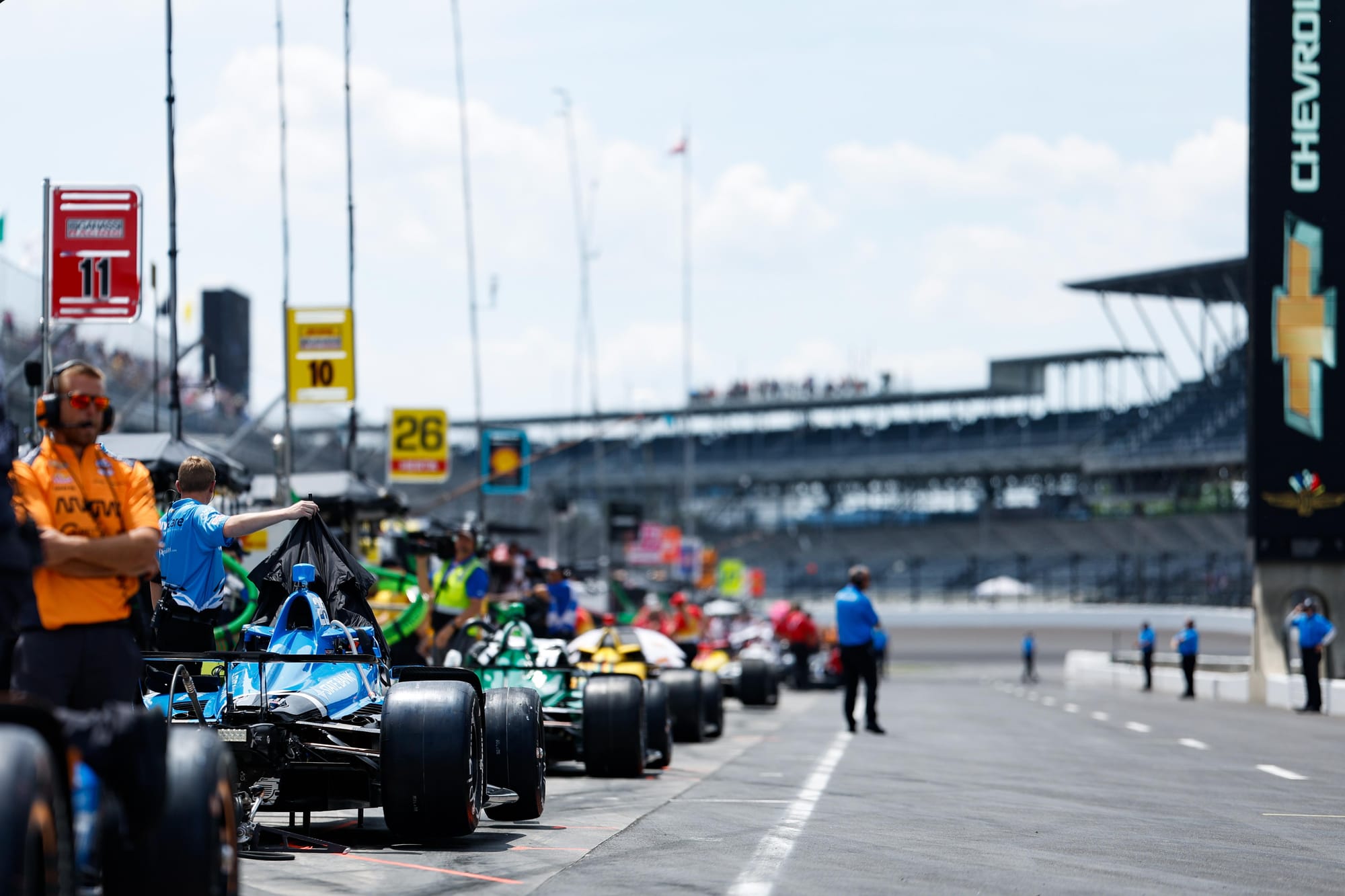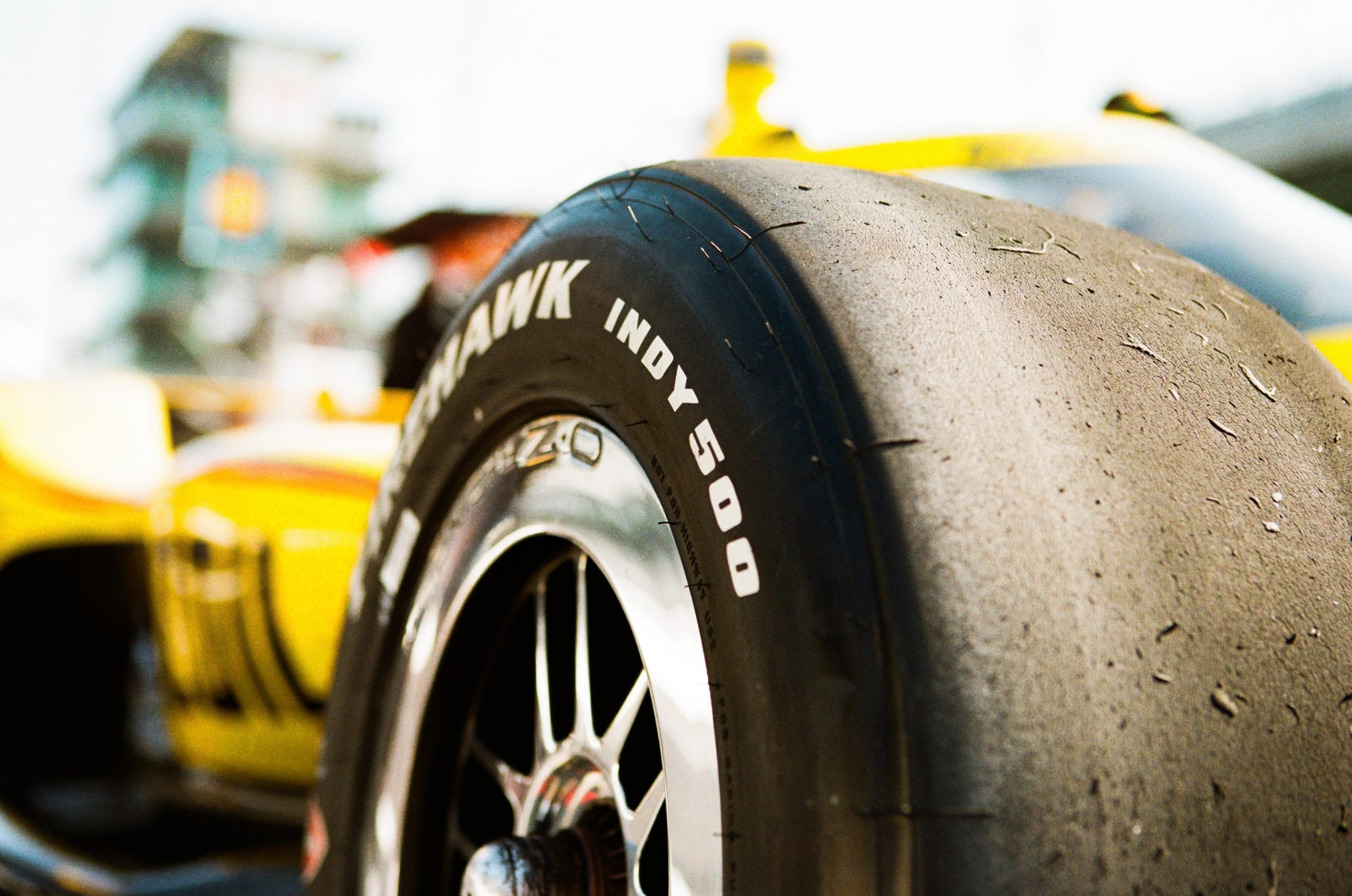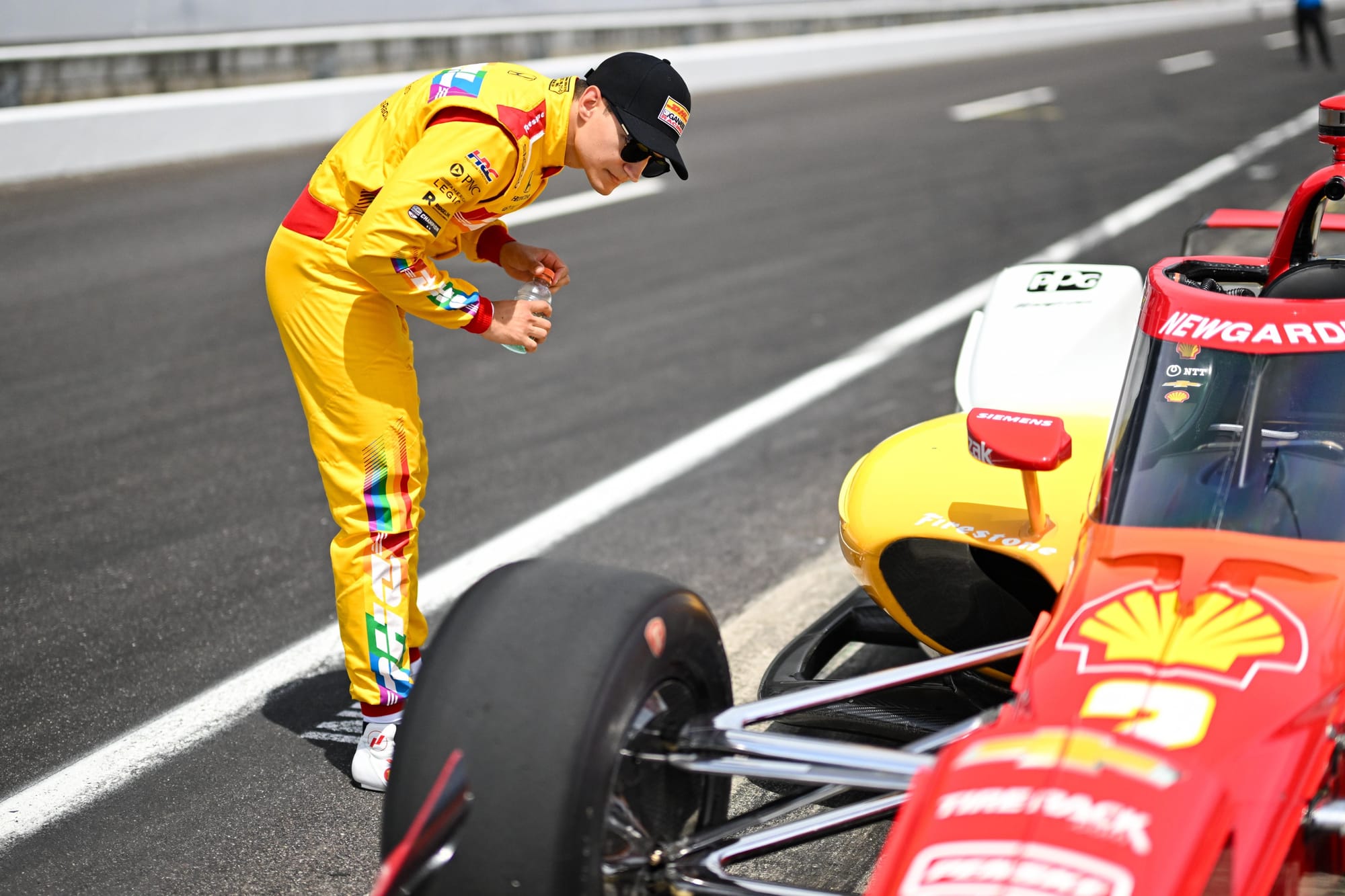I have this image in my mind of McLaren team boss Gavin Ward or AJ Foyt's technical handler Michael Cannon digging through a huge bin.
But they are not looking for a lost piece of jewelry or something similar. They are looking for missing suspension pieces.
An amazing story has unfolded in recent years at the Indianapolis 500 where an old part of the suspension system was worth a big win — until it was banned this year.
How did this happen?
Dallara introduced a new drivetrain part. As is the case with many of these parts situations, IndyCar allowed the older part to remain in use for cost-saving purposes.
Most teams blindly switched to the new team. New parts are usually lighter, better designed, or more reliable for obvious reasons.
Sources at the track indicate that Ganassi was the first team to realize that — combined with the Indy 500 car's existing aero package — the old drivetrain was worth a nice win.
As Ganassi engineers and employees moved on to other teams over the years, word began to spread, to the point that Will Power suggested earlier this week that Penske was the only team in last year's Fast 12 that didn't use this part.

It was always on the clock, because Dallara stopped making those specifications, ripping parts off show cars, and teams were digging through the “bin” parts.
Hence the visions of IndyCar engineers and team bosses fighting over the litter to find one of the “golden” pushrods.
Unfortunately for patrons, this year's drivetrain has been banned by IndyCar, partly for safety concerns based on quality control and such.
It's a great story that further proves, that even though IndyCar is a series of spec bodies, there are still a lot of areas where people push the limits. Especially when it comes to the Indy 500.
The fact that Penske wasn't running those pushrods — and that others now can't either — partly explains Penske's move toward the front when it has struggled so much in qualifying since the introduction of the aero guard in 2020.
Of course, motives are not the only reason.
If the car is lighter this year, why don't we see the majority of teams going faster? Why does the Honda seem slower? Let's take a look at some of the elements affecting the speeds we're seeing this year.
Hybrid (or not)

We don't have the new hybrid IndyCar, which will be on display at Mid-Ohio in July. But make no mistake, the device will already impact the Indy 500 this year.
The car already features a host of redesigned parts that were introduced ready for hybrids, and this has affected the packaging of the engines. This affects not only the horsepower, but the weight distribution and aerodynamics of the car.
When you have drivers split by less than a tenth of a second over 10 miles, you better believe this is a problem for engine manufacturers, or at least forced them to do things differently than last year.
This may be one reason why Honda-powered cars struggle a little more – because they do have less horsepower than last year.
This is one area where we have to speculate a little because engine information will be kept secret by the manufacturers where possible – and the fact is that Honda and Chevrolet are working together to develop the new hybrid car. You have to believe they had to share some information about each other's engines and how to fill them.
This may explain part of Chevrolet's gains, which is that it was able to take some ideas from Honda. Racing will delve into this further at the track this week.
the frame

You can give an IndyCar car 100 more horsepower if you want – but if you don't change the part of the car that touches the track, you may not get the benefit.
As we've seen generally this year, Firestone opted for a stiffer compound for what should have been a heavier car with the advent of the hybrid.
Indy is no different.
The harder tires didn't affect the difference significantly in terms of grip, and as with all tire swaps, the softer tires allow for more grip but wear down quicker, while the harder tires offer less grip but last longer, very simply speaking. in general.
There wasn't a huge lack of grip with the stiffer tyre, but the left sides in particular are a little stiffer and sometimes with the stiffer tyre, you find it difficult to turn it in, which may be why we saw a fair number of drivers going faster On the second lap of a four-lap qualifying round.
Apply what we've learned

It's clear that despite some of these shortcomings, Penske is going faster this year. Obviously some gains were found that other teams couldn't achieve in the ability to buck the trend and move faster.
Let's take a look at some other teams' fastest drivers from 2023 to 2024 in the playoffs.
Ganassi
2023 Palo 234.217 mph
2024 Palo 232.306 mph
The difference: 1.911 mph
Ed Carpenter
2023 Vikai 234.211 mph
2024 Vikai 232.610 mph
The difference: 1,601 mph
Arrow McLaren
2023 Rosenqvist 234.114 mph
2024 Rossi 233.090 mph
The difference: 1.024 mph
AJ Voigt
2023 Ferrucci 233.661 mph
2024 Ferrucci 232.692 mph
Difference: 0.969 mph
If we look at the fastest teams last year and compare them to this year, we have two very good examples, and two not so good examples.
Alex Palou obviously got pole position last year but failed to make the Fast 12 this year, had an engine change in the lead up to qualifying, and only got one lap in on Saturday. So the circumstances and adversity don't make it a great comparison, although Ganassi was clearly slower.
Rinus VeeKay is also a bad example as he made the Fast 12 at the last minute after being involved in an accident early on Saturday, so his car was not the perfectly prepared rocket it had been the previous year and his preparation was compromised.
Our two good examples are McLaren and Foyt, both of which are about 1mph slower. This 0.5-1 mph slower range is a good estimate of what the tires, engine packaging and lack of old pushrods have done to this diff.
Just 1 mph extra would have put Rossi second on the grid instead of fourth, so this shows you not only how much these factors cost some teams, but also how much time Penske found.
Power was this team's best qualifier in 2023 in 12th at 232.635 mph. However, Scott McLaughlin broke the record in four laps this year at 234.220 mph.




